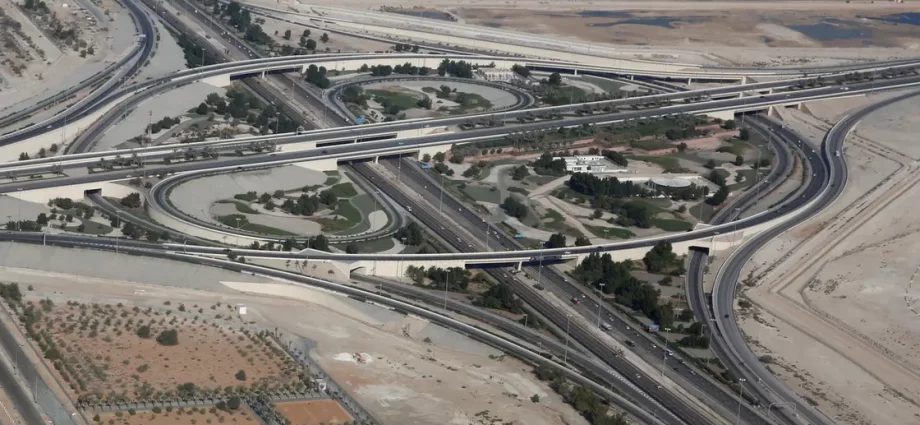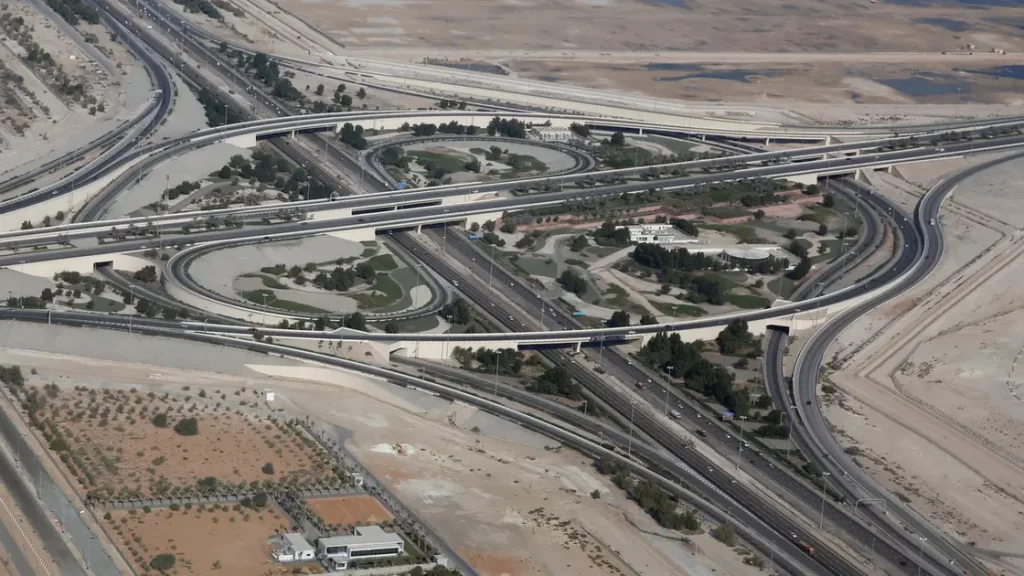Abu Dhabi lays out plans for cleaner air, to slash traffic pollution
Speaking during the ‘Cleaner Air in Abu Dhabi’ panel discussion held at the UAE Pavilion at COP28, Meera Mohammad Khaled Nayef Harara, an air quality and nuisance expert with the Environment Agency Abu Dhabi (EAD), said Abu Dhabi transport contributes to about 34 percent of nitrogen oxide emissions and about 17 percent of particulate matter, with taxis and buses being heavy contributors.
“We decided to look into technologies that could help us deepen our understanding of what’s really happening out there,” said Harara. “We’ve worked on several projects in the agency when it comes to monitoring, as an environmental body, we always try to find the most appropriate solutions and to understand environmental quality.”
Air quality tests on Abu Dhabi roads
Using remote sensing technology on the streets of Abu Dhabi, analysts have been performing tests on air quality and which vehicles are the worst polluters.
The study took place across 15 dates at six different sites in the capital and captured 83,000 usable data measurements. Measurements were validated through emissions data, and license plate records.
“Our focus was light duty vehicles (LDV), due to them being the majority [of vehicles on the road],” said Harara. “We saw that 80 percent of the Abu Dhabi fleet was occupied by privately owned vehicles, 16 percent were taxis and just four percent were public.”
“Cars were running on diesel, petrol, gas, natural gas and electric hybrid, so we wanted to see how each type of fuel performed in terms of its average vehicle age.”
Of the taxi fleets, 84 percent were Toyota Camry, with pre-2018 editions of the vehicles responsible for more than half of the total NOx (shorthand for nitric oxide) emissions. Diesel LDVs were the oldest and the most emitting out of the four groups of vehicles, while public LDVs were found to emit more NOx pollutants than privately owned, gas-fuelled vehicles.
European Union emission standards
The European Union (EU) has made Euro emission standards to limit the amount of harmful chemicals that spread in the air by the millions of vehicles across the entire planet.
These chemicals pollute the air that all humans and animals, including plants, breathe; more pollutants mean health problems and more health problems could lead to an increased mortality rate.
The Euro emission standards seek to limit the vehicle’s toxic gas to attain cleaner, breathable air.
The EU introduced the 1st Euro level (Euro 1) in 1992 as an initiative to regulate and standardize the amount of carbon monoxide (CO) and other poisonous chemicals being emitted by motor vehicles.
Currently, six levels of Euro emission standards have been adopted in different parts of the world. The latest, Euro 6, was introduced in September 2014 – 22 years after the 1st emission level came out.
Since 2018, the UAE has had a minimum standard of Euro Four on LDVs, whereas the European Union introduced Euro Six D in 2020.
According to Harara, should Abu Dhabi implement Euro Six, it would cut out half of its NOx emissions from vehicles running on diesel, and the emirate would record about 45 percent less NOx emissions for vehicles that comply with Euro 6 that are running on petrol.
“We’ve compared how we’re performing against the latest models in Europe and seen that we’re emitting 10 times more due to us still being on the Euro Four standard (for vehicles),” she said.
When Abu Dhabi Integrated Transport Center deployed public buses that complied with Euro 6 regulations in 2019 and 2020, the environment agency found a 50 percent reduction in particulate emissions.
Another recommendation is to ban second-hand or used vehicles that are under Euro Four for petrol vehicles and below Euro Six for diesel vehicles.
‘No one-size-fits-all approach’
Tim Dallman, International Partnerships Programme Lead, International Council on Clean Transportation (ICCT), said, due to its work around the world, they have found that while “there’s no one-size-fits-all approach,” data can put a spotlight on “what’s happening in the city, and what are the vehicles that really need to be targeted with policy actions.”
He pointed to a pilot project in London that aimed to provide data to clean up the city’s vehicle fleet of taxis and buses and hasten the transition to zero-emission vehicles.
In similar results to those seen in Abu Dhabi, the London diesel taxi fleet has seven times the Nox emissions of passenger cars.
“We were able to support the mayor’s initiative to transition to zero capable taxi fleets and phase out the higher polluting, diesel taxis,” Dallman said.
How deadly air pollution can be
Sean Macguire, Director of Strategic Partnerships of the Clean Air fund, stressed how deadly air pollution can be to both the climate and people’s health.
“It kills or contributes to the death of up to seven million people a year, and considerably more than that suffer from ill health, asthma, strokes, lung cancer and lung disease,” he said. “The first thing you have to do when you want to kind of address air pollution is to understand where it’s coming from. You need to put filters and scrubbers on your power stations, shut down coal-fired power, and move to electric sources of heat, light, and power,” Macguire said.
“But one of the big issues remaining is still the contribution of road transport to air pollution.”
To alleviate this issue, “People will have to upgrade and change their vehicles, so you want people to understand why and to understand it’s for the benefit of their health and the health of their children.”
He asked: “How do we keep our planet healthy and how do we keep our people healthy?” he asked, adding: “If we’re still using internal combustion engines, we are still contributing to greenhouse gas emissions.”
According to Macguire, there are roughly 1.5 billion internal combustion engine vehicles on the roads across the globe. This compares to just 20 million plug-in electric vehicles on the world’s roads.
“There is hope,” he said. “In China last year, 4.4 million plug-in electric vehicles were sold and electric vehicles are the future. It’s just around the corner.”
“Smart governments are putting in place tax and regulatory incentives to encourage full electrification,” Macguire added.
“And that’s where the future is in terms of dynamic action on air pollution.


